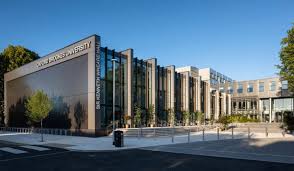The University of Oxford is one of the most prestigious and ancient centers of learning in the world. Nestled in the historic city of Oxford, England, the university has been a beacon of intellectual development and groundbreaking discoveries for centuries. With a rich tapestry of history, unparalleled academic achievements, and a globally diverse student body, Oxford is a name synonymous with excellence. This article delves deep into its history, structure, academic programs, cultural contributions, and frequently asked questions.
History and Origins
The University of Oxford’s origins trace back to the late 11th century, making it the oldest university in the English-speaking world. The exact date of its founding remains uncertain, but teaching began in some form around 1096. By the 12th century, the university gained prominence, particularly after King Henry II banned English students from attending the University of Paris in 1167.
Oxford’s structure began to take shape in the 13th century with the establishment of the first colleges, including University College (1249), Balliol College (1263), and Merton College (1264). These institutions provided housing, sustenance, and discipline, setting the foundation for the collegiate system that defines Oxford today.
Collegiate System
One of Oxford’s most distinctive features is its collegiate system. Unlike many other universities, Oxford is composed of 44 colleges and halls, each functioning as an independent institution under the umbrella of the central university. These colleges are responsible for admitting students, overseeing their tutorials, and providing accommodation.
While the central university manages examinations, lectures, research funding, and libraries, colleges offer close-knit communities where students live and interact. Some of the most famous colleges include:
- Christ Church: Known for its architectural grandeur and connections to famous figures, including Lewis Carroll.
- Magdalen College: Renowned for its beautiful grounds and annual May Day celebrations.
- All Souls College: A graduate-only college with a reputation for academic excellence.
Academic Prestige
Oxford is consistently ranked among the top universities globally. It is particularly renowned for its humanities, sciences, and medical programs. The university offers a wide range of undergraduate, postgraduate, and doctoral programs across disciplines.
Key academic facts:
- Courses: Over 350 graduate programs and numerous undergraduate degrees in fields ranging from philosophy, politics, and economics (PPE) to engineering and computer science.
- Tutorial System: The tutorial system is a hallmark of Oxford education. Small group sessions with expert tutors allow for personalized learning and in-depth discussion.
- Research: Oxford is a leader in cutting-edge research. Its contributions include the development of the AstraZeneca COVID-19 vaccine, advances in artificial intelligence, and groundbreaking work in the humanities.
Libraries and Museums
The University of Oxford boasts a vast network of libraries and museums, attracting scholars and tourists alike.
- Bodleian Library:
- Established in 1602, it is one of the oldest libraries in Europe and the second-largest in Britain.
- Its collection includes over 13 million printed items, rare manuscripts, and historical documents.
- Ashmolean Museum:
- Founded in 1683, it is the world’s first university museum.
- The museum houses an extensive collection of art and archaeology, from Egyptian mummies to contemporary artwork.
- Museum of Natural History:
- Famous for its dinosaur skeletons, dodo remains, and engaging exhibitions on natural sciences.

Global Impact and Alumni Network
Oxford has produced some of the most influential leaders, thinkers, and innovators in history. With over 250,000 alumni spread across the globe, the university’s impact transcends borders.
- Nobel Laureates: Oxford counts over 70 Nobel Prize winners among its alumni and staff.
- World Leaders: Alumni include 28 British Prime Ministers (e.g., Margaret Thatcher, Tony Blair), U.S. Presidents (e.g., Bill Clinton), and numerous international heads of state.
- Writers and Thinkers: J.R.R. Tolkien, Oscar Wilde, and Stephen Hawking are just a few literary and intellectual icons who studied at Oxford.
Student Life and Culture
Oxford offers a vibrant and enriching student life, blending centuries-old traditions with contemporary experiences.
- Clubs and Societies: Students can join over 400 clubs and societies, covering interests like debating (Oxford Union), sports, drama, and academic pursuits.
- Sports: The university has a strong sporting culture, particularly in rowing. The annual Oxford-Cambridge Boat Race on the River Thames is a major event.
- Traditions: Oxford’s traditions include formal dinners, May Morning celebrations, and matriculation ceremonies, which imbue student life with a sense of heritage.
Admissions and Financial Aid
Admission to Oxford is highly competitive, with applicants required to demonstrate exceptional academic ability and commitment. The process typically involves:
- Application: Through UCAS (for undergraduates) or direct application for postgraduates.
- Tests and Interviews: Many courses require aptitude tests (e.g., the BMAT for Medicine) and rigorous interviews.
Oxford is committed to supporting students financially. Scholarships like the Rhodes Scholarship, Clarendon Fund, and various college-specific awards make the university accessible to talented students regardless of their background.
FAQs About the University of Oxford
1. What is the University of Oxford famous for?
Oxford is renowned for its academic rigor, historic significance, and influential alumni. It excels in fields like the humanities, sciences, and medicine.
2. How old is the University of Oxford?
Teaching began in 1096, making it the oldest university in the English-speaking world.
3. What is the tutorial system?
The tutorial system involves one-on-one or small group teaching sessions with expert tutors. It allows for in-depth discussions and personalized learning.
4. What are some famous landmarks in Oxford?
Landmarks include the Radcliffe Camera, Bodleian Library, Christ Church Cathedral, and Bridge of Sighs.
5. How competitive is admission to Oxford?
Admission is extremely competitive, with thousands of applicants vying for a limited number of spots. Strong academic performance and passion for the chosen subject are essential.
6. Are there financial aid options for international students?
Yes, Oxford offers numerous scholarships and financial aid programs for international students, including the Rhodes Scholarship and Clarendon Fund.
7. What is the relationship between Oxford and Cambridge?
Oxford and Cambridge are often seen as rivals but share many similarities, including their collegiate systems. Their annual boat race is a symbol of this friendly rivalry.
8. Can tourists visit Oxford?
Yes, many of Oxford’s colleges, libraries, and museums are open to the public, offering guided tours and access to historic sites.

9. How diverse is Oxford’s student body?
Oxford is highly diverse, with students from over 160 countries. The university values inclusivity and actively works to attract students from underrepresented backgrounds.
10. What is the role of Oxford in global research?
Oxford is a leader in global research, making significant contributions in areas like vaccine development, climate change, and artificial intelligence.
Conclusion
The University of Oxford is not just an institution of learning; it is a symbol of enduring excellence, intellectual curiosity, and global influence. With its storied past, dynamic present, and promising future, Oxford continues to inspire generations of students and scholars to push the boundaries of knowledge and innovation. Whether as a prospective student, a history enthusiast, or a curious traveler, exploring the wonders of Oxford is a journey into the heart of human achievement.



